Currently, the x-ray function is not available for Kindle. Please refer to this page for words in the book that has a ‘+’ in front of it.
In order of appearance:
Swedish University entrance exam: (Högskoleprovet)
Högskoleprovet is a national selection exam held twice a year. It tests knowledge and skills from middle and gymnasium (high school). The exam gives merit points upon admission to higher education such as colleges, universities, and other post-high school educational institutions.
The exam can thus give prospective students a second chance at admission, in addition to the final grade from studies at the upper high school. Results are shown in a normalising constant ranging from 0.00 to 2.00.
The exam tests one’s maths, Swedish and English skills and has a total of 160 questions with two parts: language and math. There will always be one subtest to help develop questions for future exams. Which subtest that was the test part is revealed after the whole test is concluded.
An interesting point derived from alleged research stated that a monkey would average a grade of 0.40, meaning a randomised selection of answers will at least result in this grade. This resulted in the expression, “Even a monkey can get 0.40 on högskoleprovet.”
EPA tractor: (EPA traktor)
Also known as A-tractor, is a motor vehicle converted car. It was originally intended to tow vehicles or work tools and must be equipped with a coupling device. Nowadays, the EPA is mainly used as a means of transport by young people.
The design speed of the EPA tractor is a maximum of 30 km / h, so driving on highways is impossible. The age limit for obtaining an AM driving licence is 15, and for tractor licences, 16.
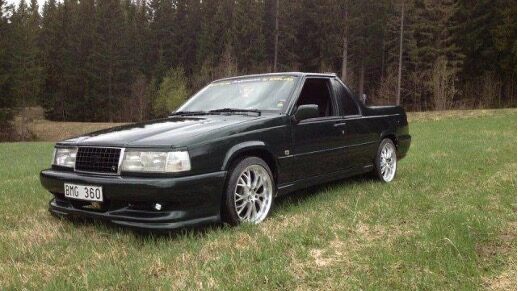
Risk two, skid track: (Risktvåan, halkbanan)
Risk two is the second part of a two-part education surrounding risks you may encounter while driving. A person must finish both courses to be able to take the licence exams.
Risk one focuses on the theory surrounding alcohol, drugs, tiredness, and other harmful behaviours in traffic. Usually invites discussion.
Risk two focuses on practical driving in different weather conditions and harmful situations. Usually, this education is best held during wintertime, with snow. If there is no snow, the educators will cover the track with water and different things to make it slippery, such as soap.
You complete a set of different tracks and manoeuvres, which causes you to lose control of the car. Also, it is expected to learn physically how to get out of a crashed car and wear glasses that simulate how it feels to drive being drunk or on drugs. This education is intended to make the driver aware of how mistakes can feel and learn to respect driving.
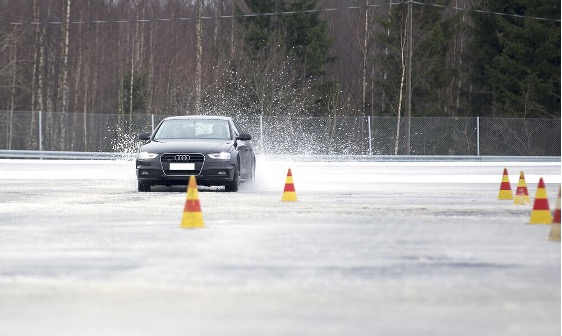
A Scandinavian mile: (Mil)
Mil is a unit of length common in Sweden and Norway but not Denmark. Today, it is standardised as 1 ‘mil’ being 10 kilometres, but it had different values in the past.
The word is derived from the same Roman source as the English mile. In Sweden, the international mile is formally called ‘English mile’ (engelsk mil), although it is sometimes just referred to by the English word mile. However, in situations where confusion may arise, it is more common for Scandinavians to describe distances in terms of the official SI unit kilometre.
The ‘mil’ is currently not used on road signs, and kilometre is the standard for most formal written distances. However, it is very common in colloquial speech, including 5 km, which is referred to in Swedish as ‘half a mil’ (en halvmil).
(I personally believed for longer than I’d like to admit that the concept of ‘mil’ was known to everyone using the SI unit system.)
There is no cow on the ice: (Det är ingen ko på isen)
‘Ingen ko på isen’ is a Swedish idiom that has the meaning of ‘no immediate danger or urgency, no panic.’
Etymology: Abbreviated version of ‘there is no cow on the ice as long as the tail (arse) is on the land’, which is interpreted to mean that there is no need to worry as long as the cow has solid ground under its hind legs and can save itself if the ice breaks. When no running water was in the barnyards, cows were led to a lake to drink.
Example: “Believe me, we have all the time in the world, there is no cow on the ice.”
Northern inhalation: (Inandnings-jo)
Inandnings-jo is often used as a more powerless variant of “yes”. Partly as a confirmation of what another person had said, but simultaneously to signal that they have not planned to say anything more. It can end a conversation or discreetly show a narrator that you are listening, agreeing, and wanting him to continue.
The expression comes from northern parts of Sweden but is sometimes used in other parts.
YouTube example: http://tiny.cc/nokevz
Parental names in Swedish: (Mamma, Pappa)
Mamma, pappa are the words for mum and dad, respectively, in Swedish. Moder, mor or mamma is the female partner in a parental relationship. The word ‘mamma’ comes from the Latin word for breast(wart), mammillas. Fader, far or pappa is the male partner in a parental relationship.
In old Norse, a father was called faþir, and a mother was móðir. However, depending on the region, the spelling and pronunciation of this may vary.
It was generally considered less classy to say, mamma or pappa. Fader, far and moder, mor to this day have a formal feeling to it. However, these days, the Swedish language makes almost no use of its formal language in any regard. The norm is simply calling people their names, no matter their status or relation. Calling your parents mamma and pappa is by far the most common since speaking formally has the feeling of speaking to royalty (which likely is the only situation you would).
Another formal word that is disappearing is ‘ni’, meaning ‘you’. This is said to an older person or someone in a higher position. However, these days, it can even be considered rude to say it, as it has the connotation of calling a person old. (The day you get called this; is the day you truly know you have become old.)
First Sunday of Advent: (Första advent)
Första advent is the first day of the liturgical year and the start of the season of Advent. It is common in Sweden to light one candle in a four-candle candlestick starting from the first Sunday of Advent. Many burn it once daily until the second Sunday of Advent when the second one is lit. This continues until all four are lit together.
Swedish people still celebrate all four Advent Sundays leading up to Christmas. However, it’s not considered as religious as it used to be, which is why many atheists still celebrate this.
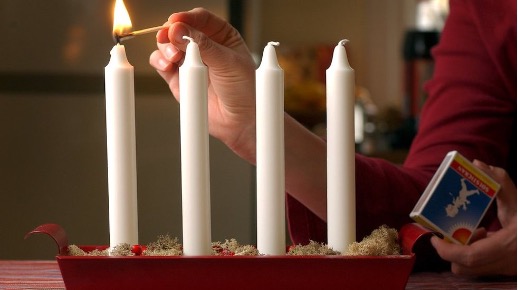
The provinces of Sweden: (Svenska landskap)
The provinces of Sweden are historical, geographical, and cultural regions. Sweden has 25 provinces; they have no administrative function but remain historical legacies and a means of cultural identification, for example, dialects and folklore.
As mentioned in the text, Dalarna, Härjedalen, and Jämtland are three provinces on the Midwest side of Sweden.
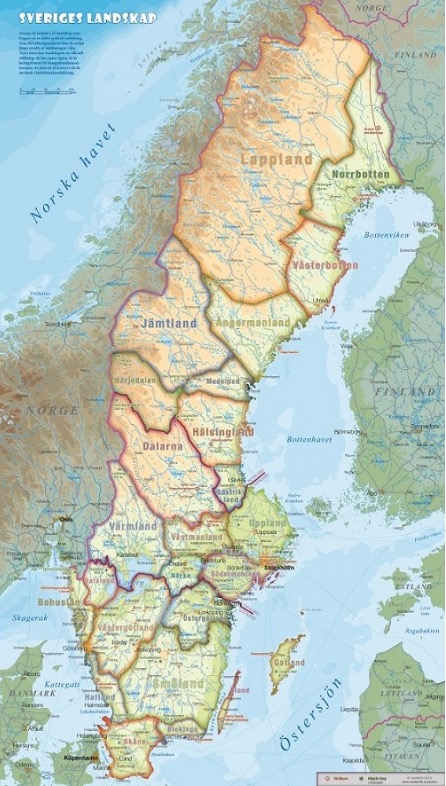
Fort Boyard: (Fångarna på fortet)
Fångarna på fortet is a Swedish version of the French TV programme series Fort Boyard, which takes place at Fort Boyard off the southwest coast of France. In the Swedish versions, teams have consisted entirely of celebrities.
In the Swedish programme, two teams compete to enter the fort’s treasure chamber and retrieve as many gold coins as possible within a given time. In order to enter the treasury, the teams must collect keys. These are earned by completing challenges in the fort’s various cells or through duels and riddles. Next, teams must collect clues that form a password and then have the opportunity to collect as many gold coins as possible. The prize money is often donated to charity.


Christmas calander: (Julkalendern)
Julkalendern is a Christmas calendar TV series mainly for children, broadcast by Sveriges Television since 1960 and has developed into an essential part of contemporary Swedish Christmas tradition. Every series consists of 24 episodes (with a few exceptions), broadcast daily 1–24 December. The theme for most series has some connection to Christmas.

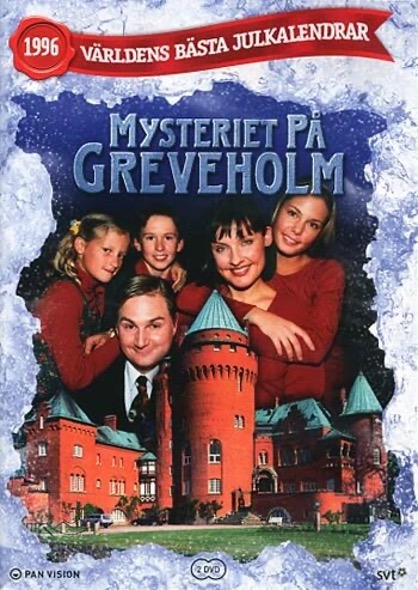
Snus: (Snus)
Snus is a tobacco product from a dry snuff variant in early 18th-century Sweden. It is placed between the upper lip and gum for extended periods as a form of sublabial administration. Snus is not fermented. Although used similarly to American dipping tobacco, snus does not typically result in the need for spitting and is steam pasteurized.
The sale of snus is illegal in several countries, including the UK, Australia, New Zealand, and all European Union (EU) countries except for Sweden.
Snus has been seen as an alternative to smoking and vaping. Chewing, dipping, dissolvable, and snuff are tobacco products. Snus usually contains nicotine, which can lead to nicotine addiction. The chemical constituents of different types of snus vary, and population-level studies suggest that the disease risks also vary. Using snus is harmful to health, although much less than smoking tobacco.
Loose snus ‘lössnus‘ is a moist powder which can be portioned and packed into a spherical shape. One would simply pinch the tobacco and place it under their upper lip. Over time, the demand for loose snus has been replaced by portioned varieties.
Portion snus ‘portionssnus‘ is packaged in moist powder in small teabag-like sachets. It comes in smaller quantities than the loose powder but is considered more convenient and discreet than loose snus. People commonly use snus since it does not require them to go to a smoking area. This made it common for people to use it in workplaces or schools.
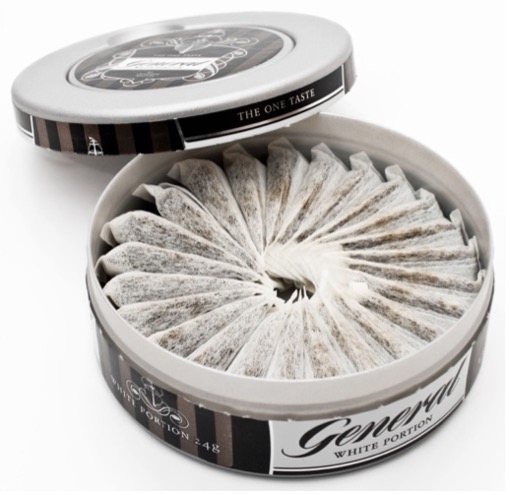
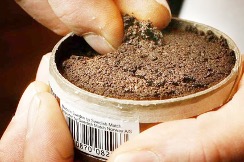
Highschool graduation bal: (Balen or Studentbalen)
The Swedish ‘prom’ is a formal ball or / and graduation dinner with associated festivities, which marks the end of gymnasium (see latter definition), which is the Swedish version of high school. It is commonly held at the end of the academic year or during the final weeks before graduating.
In Sweden, this kind of event is usually known as ‘Studentbalen’. The word is a proper noun meaning ‘The Student Ball,’ while the word studentbal is a common noun that can refer to any formal dinner and dance at a Swedish university.
The ‘bal’ is usually a formal event, students are encouraged to wear ballroom gowns and suits. It is common practice to ask a partner or a friend to be one’s escort.

Gymnasium: (Gymnasium)
A ‘gymnasium’ is a free and voluntary secondary education (high school) in Sweden for young people who have completed primary school (middle school). Swedish gymnasium has the concept of majors or programmes similar in some sense to university.
Many gymnasium programmes are mainly preparatory to higher education, but there are also those that are mainly vocational programmes. However, students in vocational programmes also have the right to study for general entry requirements.
All upper courses are graded on a scale of A, B, C, D, E and F or a dash if there is no basis for assessment. Not too long ago another system was used which was on a scale of MVG, VG, G, and IG (Mycket Väl Godkänt: Very Well Passed, Väl Godkänt: Well Passed, Godkänt: Passed, Icke Godkänt: Not Passed.)
Gymnasiums usually focus on more specific subjects such as theory, craftwork, and technology. With a wide arrange of education possibilities depending on the area one lives in. Commonly the education is three years but can sometimes be four.
Examples of educations that will be mentioned in the book are:
Humanistic language (Humanistiska språk); an education where one studies languages and their origin.
Beauty and health (Skönhet & hälsa); an education focused on subjects such as make-up, nails, hair, massage, skin care, and many more. Often pairing up several classes with the hairdresser programme.
Science (Naturvetenskap); an education where one studies a range of sciences, such as chemistry, physics, and biology. There are more specific versions of this programme, but this is the general one.
(Personally, I studied beauty and health for three, and I regret it daily.)
Ludo: (Fia med knuff)
Fia med knuff is a strategy board game for two to four players, in which the players race their four pawns from start to finish according to the rolls of a single die. Like other cross and circle games, Ludo is derived from the Indian game Pachisi. The game and its variations are popular in many countries and under various names.
The Swedish name of the game comes from the Latin word fiat, meaning “let it be done”. The “med knuff” part means “with pushing”, referring to a version of the game where you are allowed to knock other player’s pawns off the board if one lands on the same one.
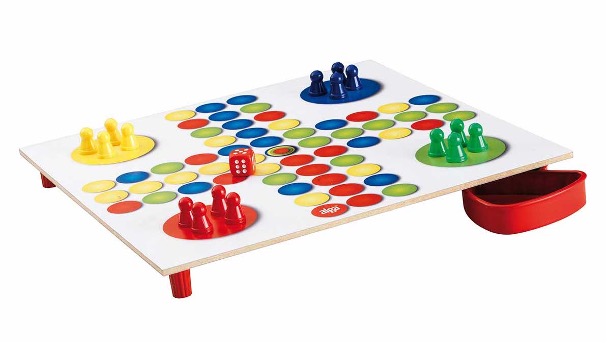
If you take the devil in your boat, you have to row him ashore: (Har man tagit fan i båten får man ro han i land)
“Har man tagit fan i båten får man ro han i land” is a Swedish idiom which has the meaning of once you have begun something, you must complete it regardless of the consequences.
“If you dance with the devil, you have to pay the piper.” is a similar expression in English.
Midsummer: (Midsommar)
Midsommar is a celebration of the season of summer usually held at a date around the summer solstice. It has pagan pre-Christian roots in Sweden.
The most common celebration of Midsummer is tied to dancing around a midsummer pole—a foliated and flower-decorated pole, either in the form of a cross with wreaths hanging from the crossbar or one or larger wreaths hanging in ribbons and encircling the pole.
Wearing a flower wreath in the hair is customary during Midsummer. They can be tied with birch twigs or steel wire as a base, adding leaves and flowers.
At Midsummer, it is common in Sweden to eat herring, crème fraîche and chives, baby potatoes, and strawberries. Midsummer is very much associated with baby potatoes, which are often served with dill. Many people drink schnapps with the food. A large part of the tradition includes singing a little ‘nubbevisa’ or ’snapsvisa‘ before drinking the schnapps. ‘Helan går’ is the most famous midsummer schnapps song.
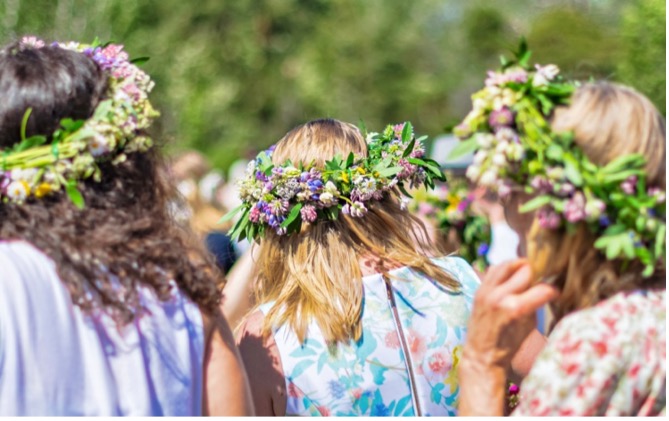
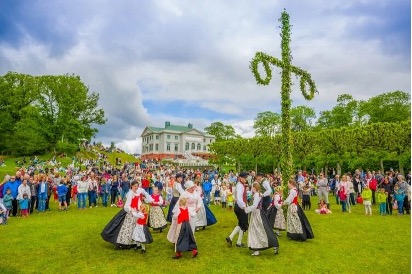
Lucia procession: (Lucia)
Lucia is a holiday celebrated on 13 December, and the name of the main character of that holiday. In Sweden, Lucia, along with Advent, is part of the preparations for Christmas.
Lucia is one of the few festivals in Scandinavian Protestant countries to be named after a saint: St Lucia, the patron saint of Syracuse who died in the 3rd century. But the name of the feast of lights is more recent than the celebration itself. There are records from the Middle Ages of the celebration of the beginning of the Christmas fast. The longest night of the year was equal to midwinter and served as the equivalent of midsummer. At the darkest time of the year in the pre-Christian North, the powers of light were conjured to bring back the light. According to Nordic folklore, it was a dangerous night as it was believed that supernatural forces were at work. It was also believed that animals could speak on Lucia’s night.
A regular Lucia procession consists of a parade of people singing songs and carols with Lucia, Staffans, and Christmas themes. In connection with the Lucia procession, guests can be offered a lussefika, which can consist of coffee or mulled wine and a child-friendly alternative, lussebullar, and gingerbread. The modern Lucia procession traditionally always features a Lucia, dressed in white with a crown of candles on her head and a red ribbon around her waist. Lucia is picked through a selection process (after teenage age) and does not sing during the procession; however, she does usually read some passages.
The Lucia is followed by maids, wearing the same white long sashes as the Lucia but with silver tinsel or wreaths in their hair and sometimes also tinsel or other ribbons around their waists. As well as star boys. It is common to go watch a Lucia procession on this day, and schools usually host their own processions. As well as kindergartens and children.
The role of Lucia is considered very difficult to perform because of the live candles in her hair, as well as the fact that she must stand with her hands together in the form of prayer for the whole procession. As well as the maids and star boys must hold a live candle in their hands. (With children usually a fake candle is held.) Hence there is a level of risk of fire or overheating since the procession stands close together. Typically, if someone feels faint, they blow out their candle and sit down until they can stand again.
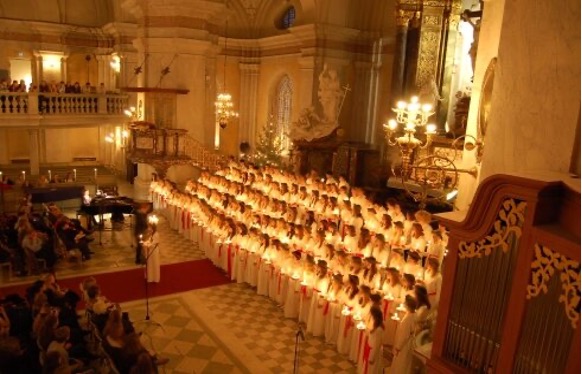
Swedish high school graduation: (Studenten)
The end of gymnasium in Sweden and the festivities surrounding it (colloquially referred to as ‘studenten’ or ‘studentexamen’) differ from school to school but have shared characteristics. Students usually organise a ball at the end of the school year. At school, the student day may include a music concert, awarding of scholarships, and other honours. The graduation day in Sweden is a rich event filled with plenty of traditions and is commonly considered one of people’s favourite days of their lives.
The graduation attire has no definitive rule, but white dresses are commonly worn by girls and suits in grey or blueish colour are worn by guys. Most important is the graduation hat ‘studentmössa’, which is measured to fit the person specifically and looks somehow similar to a typical sailor hat. At the centre of the front a flower which has the colour representing the education the person studied, along with the person’s name on its sides. On the back the text differs from person to person but can have words of celebration, graduating year or education name. It is common to have one’s classmates sign the inside of the hat. (I too did a speech at my graduation, but only for my class, and I kept the speech inside my hat.)
The day sometimes starts with ‘champagnefrukost’, meaning champagne breakfast, where each class gathers at one person’s house and eats breakfast together. At this time, it is of course common to drink champagne and also to give out awards to the classmates, such as: class clown, best grades and so on.
At the graduation copious amounts of alcohol are drunk. Swedish students at this age are not allowed to purchase alcohol (age limit being 20), however, they can drink it from age 18. (It is super common to smuggle in alcohol into the school or around it. I brought schnapps in my makeup case.)
The graduation ceremony at the school ends with an ‘utspring’, where students leave the school. This differs from school to school but usually, the students run out of the school to a selected song and gather at the schoolyard where family and friends are waiting. In the schoolyard, students are greeted by people who may carry posters with an enlarged photo of the student as a child. The posters may also include the student’s name, class, year, and brief congratulations. At this time, it is common to hang different items around the graduating person’s neck, such as: flowers, stuffed animals, champagne glasses, water guns (to put alcohol in), and more. (I personally hung a baby sock in blue and yelled colour with schnapps inside it on my friends.)
The ‘utspring’ may be followed by a cortege through the town, with students often travelling on a flatbed or truck behind a vehicle. The trucks or floats are typically decorated with birch branches, balloons, and funny sheets with texts, slogans, or class names. Students can toast, laugh, sing, and shout on the float. The vehicle usually also honks its horn.
After the celebrations at the school, it is common for a graduation reception to be organised at the home of each individual student. Later often followed by some joined hosted party.
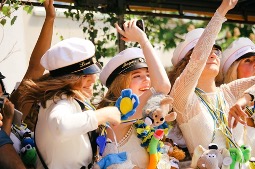

Graduation committee: (Studentkommitté)
A group of students from the school that cooperates with the other gymnasiums in their cities. They put all their focus on the students who spent their last year at the school, by planning parties, activities, balls etc.
Students usually have to pay for memberships to the graduation committee to be able to attend their events and are sometimes given a graduation card to prove their graduating status. Spread out through the graduating year, the different schools host parties, often with themes, which all graduating students can attend.
One popular event is the ‘pub-runda’, meaning pubcrawl, where each school wears a different colour t-shirt and visits different pubs in the city. It’s common to have all your friends write their name on your t-shirt as well as cutting it and styling it in different ways.
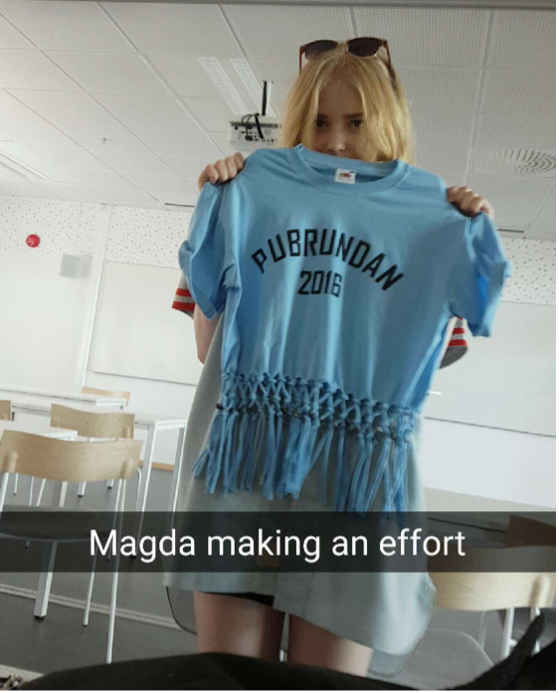

Vittra: (Vittra)
Vittra is a type of vættr (a term for supernatural spirits) from northern Sweden. A vittra is a nature spirit, a type of mythological creature very common in Scandinavian mythology.
In tales told in the north of Sweden, vittror often take the place that trolls, tomte, and vättar hold in the same stories told in other parts of the country.
Vittror live underground, are invisible most of the time, and have their own cattle (which are also invisible). Most of the time vittror are rather distant and do not meddle in human affairs but are fearsome when enraged. This can be achieved by not respecting them properly, for example by neglecting to perform certain rituals.
They can make your life very miserable or even dangerous, they do whatever it takes to drive you away, even arrange accidents that will harm or even kill you. Even now, people have rebuilt or moved houses in order not to block a ‘vittra-way’ or moved from houses that are deemed a ‘vittra-place’ (vittraställe) because of bad luck—although this is rather uncommon.
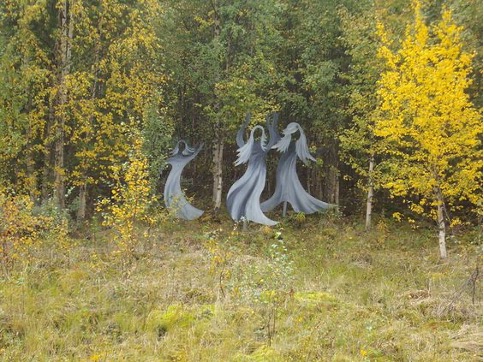
Witch’s potions: (Häxdryck)
Häxdryck is a slang and is a mixture of alcohol that has been added on so many occasions, that one is not sure what is inside anymore. It works as a potion since no one knows what effects it will have.
Study grant: (Studentbidrag)
The grant is part of the study aid and is a study subsidy. The study aid also consists of extra allowances and accommodation surcharges; the study grant is a term used in Sweden to refer to an extension of the child benefit subsidy for youths from the age of 16.
The study grant is only available to students who attend a full-time education at gymnasium, komvux, or college. When you reach the age of 20, the study grant ceases, and you can apply for student aid (CSN) instead.
Swedish emergency number: (112)
112 is the emergency number used in fixed telephone networks in the European Union and EEA countries, as well as in GSM networks worldwide, for emergency calls.
All Saints Day: (Allhelgona)
Allhelgona is a Christian holiday (though Sweden is now protestant) celebrated in honour of martyrs and saints. In Sweden, All Saints’ Day is a public holiday. It was previously held on 1 November but was moved to the first Sunday in November in 1772. The 1953 Swedish public holiday reform moved it to the Saturday between 31 October and 6 November.
A link to a more traditional commemoration of the dead also emerged at an earlier stage. This has its roots in pre-Christian Celtic traditions and was then adopted by the Christianised Germanic peoples. It was believed that at the end of summer and the beginning of winter, the dead returned home and needed to be guided by candles and fires, and this is reflected in the modern custom of lighting candles, decorating, and watching over the graves of loved ones. The custom of lighting candles on graves during All Saints’ Day developed towards the end of the 19th century in Sweden.
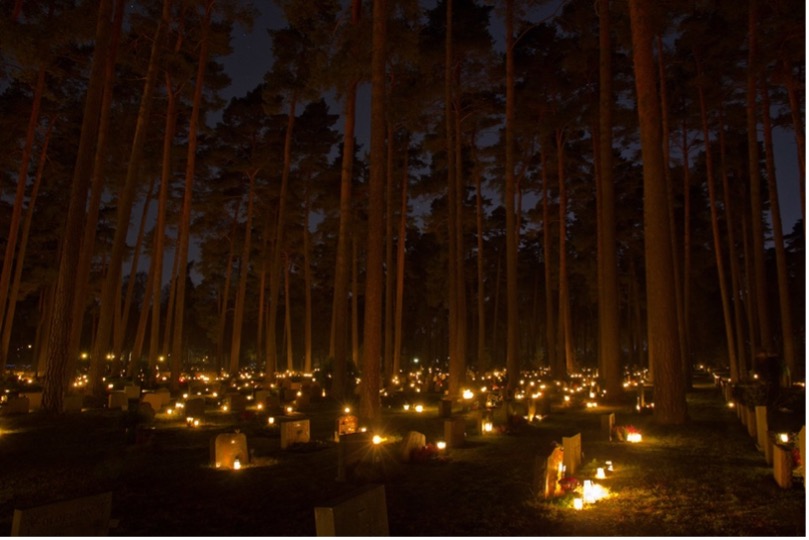
Home economics class: (Hemkunskap)
In Sweden, Home economics is commonly known as “home- and consumer studies” (hem- och konsumentkunskap). The subject is mandatory from middle years until gymnasium in both public and private schools but is regarded as one of the smaller subjects in the Swedish school system. It has a strong focus on the traditional common tasks of a home, family and practical cooking and cleaning.
After the 2011 Swedish school reform, the curriculum has been restructured with more focus on the topics of health, economy, and environment which includes Consumer economics as well as Consumer awareness.
Our Christmas ham has escaped: (Vår julskinka har rymt)
“Vår julskinka har rymt” is a Swedish-language Christmas song from 1988, sung by Werner and Werner (Åke Cato and Sven Melander) and released as a single the same year. This became the best-selling single of 1988 in Sweden, although it was released later in the year. The song is about the Christmas ham, i.e. the pig, having escaped on Christmas Eve.
The lyrics of the chorus go as such: “Our Christmas ham has escaped, and our family’s coming in an hour! Our Christmas ham has escaped, how can a pig just disappear?”